Civil and Environmental Engineering Newsletter FALL 2024


Civil and Environmental Engineering Newsletter FALL 2024

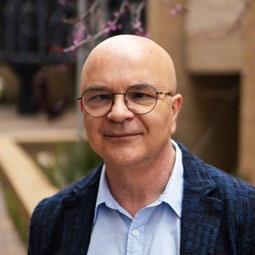
Dear Colleagues,
Greetings from the UH Civil and Environmental Engineering Department!
The last six months have been a very busy time for our department. I invite you to explore the following stories which represent a small sampling of the exciting work being done by our faculty and students. If you see opportunities for collaboration, do not hesitate to reach out, and I invite you come and visit whenever you have a chance.
Warm Regards,
Roberto Ballarini, Ph.D., P.E.
Thomas and Laura Hsu Professor and Department Chair
Civil and Environmental Engineering
Cullen College of Engineering
University
of Houston
465 139 UNDERGRADUATE STUDENTS GRADUATE STUDENTS ENROLLMENT (FALL 2023)
AWARDED (FY 2023)
75 B.S.
42 M.S.
4 PH.D.

Mim Rahimi, an assistant professor in the Civil and Environmental Engineering Department at the Cullen College of Engineering, has received a National Science Foundation
CAREER award for his research proposal into liquid-liquid interfaces for electrochemical carbon capture research.
His research proposal is “Leveraging Liquid-Liquid Interfaces for Innovative Electrochemical Carbon Capture.” It was selected for $537,719 in funding, with research running through August 2029.
“The project aims to advance electrochemical carbon capture (ECC) by employing engineered soft interfaces at liquid-liquid interfaces between two immiscible electrolyte solutions,” Rahimi said. “This novel approach addresses current ECC process performance limitations, such as the reliance on costly ion-selective membranes and oxygen gas sensitivity. These engineered interfaces will be developed and optimized for enhanced CO2 separation performance and system energetics.”
This is the second significant grant that Rahimi has earned for his research into electrochemical carbon capture in the
last two years. In 2023, he received $250,000 in funding from the Department of Energy to create electrochemical tubes to remove dissolved inorganic carbon from seawater.
Rahimi joined the Cullen College of Engineering in the 2021–22 academic year. Prior to coming to UH, he was a postdoctoral associate in the Department of Chemical Engineering at MIT. He completed his doctorate in chemical engineering at Penn State in 2017.
In his lab, Rahimi’s team develops electrochemical processes for climate change mitigation, focusing particularly on carbon capture, storage and utilization (CCUS). The carbon capture efforts target point sources, ambient air and oceanic sources. Additionally, the team is engaged in developing electrochemical processes for environmental remediation. These efforts are aimed at addressing various environmental challenges through innovative and energy-efficient methods.
As the “Energy University” committed to shepherding an efficient and innovative energy transition, the University of Houston offered a timely micro-credential course focused on artificial intelligence and robotics for energy integrity and maintenance. The course, titled “AI & Robotics for Energy Integrity,” was administered from March 22 - April 12, 2024.
“As industries increasingly adopt AI and robotics for various applications, the demand for skilled professionals who understand these technologies is growing. This course aims to equip participants with the essential skills,” said Vedhus Hoskere, assistant professor at the UH Cullen College of Engineering, who taught the module titled “Computer Vision and Deep Learning for Inspections.” Hoskere was recently awarded a grant for a project exploring how to best leverage technology like drones, cameras, sensors and AI to gather data about bridges and use it to make critical decisions and
improve safety. Course attendees will gain valuable insights covering, but not limited to:
• Efficiency through Robotics
• Data Analysis and Management
• Revolutionizing Inspection Methodologies
“By blending theoretical knowledge with practical applications and hands on experience, the course aims to empower participants with the skills needed to evaluate and adopt these advanced technology to address real-world challenges in asset management,” Hoskere said. “We hope that upskilling and knowledge gained from this course will help accelerate the adoption of AI and robotics and contribute to the advancement of safer and more resource efficient energy infrastructure systems.”

Pictured: Industries are increasingly adopting AI and robotics for various applications, including energy infrastructure operations and maintenance.
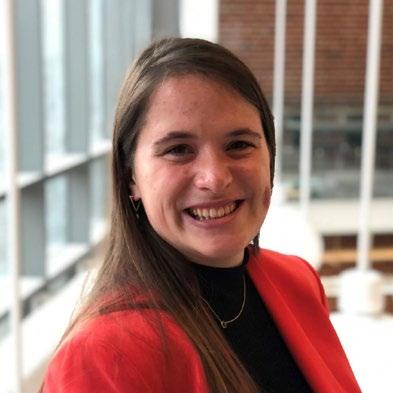
Abigail Beck will join the Cullen College on January 1, 2025, as an Assistant Professor in the Civil and Environmental Engineering Department. Beck earned her doctorate in civil engineering from the University of Illinois Urbana Champaign.
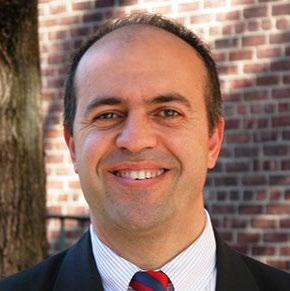
Hady Salloum has over 35 years of experience in industry and academia, directing large-scale, complex research and development projects as well as field experiments. He is currently serving as the Director of Research for BTI at UH.

An assistant professor at the Cullen College of Engineering has been awarded a three-year, $505,286 grant from the Texas Department of Transportation (TxDOT) to advance research on digitizing bridges using robots, data and artificial intelligence (AI). The efforts will help solve complex problems relating to highway bridge safety.
Vedhus Hoskere, an assistant professor in the Civil and Environmental Engineering Department, is the lead PI for the research award. His project, “Development of Digital Twins for Texas Bridges,” began in September, with research running through August 2026. Hoskere noted that their ultimate goal was to increase the efficiency and effectiveness of the state’s bridge maintenance.
This is the first TxDOT project that Hoskere will be working on. “We have been researching developing digital twins for inspections and management of various infrastructure assets over the past 8 years. This project provides us an opportunity to leverage our expertise to help TxDOT achieve their goals while also advancing the science and practice of better developing these digital twins,” he said.
Hoskere also chairs the sub task group of the International Association for Bridge and Structural Engineering (IABSE) TG5.9, ST2.2 on AI methodologies for typical pathologies/ degradation identification for remote inspection of bridges” Our international efforts align closely with this project’s goals. The insights gained globally will enhance our work in Texas, while our research at UH contributes to advancing bridge digitization worldwide.
for design and evaluation of structures
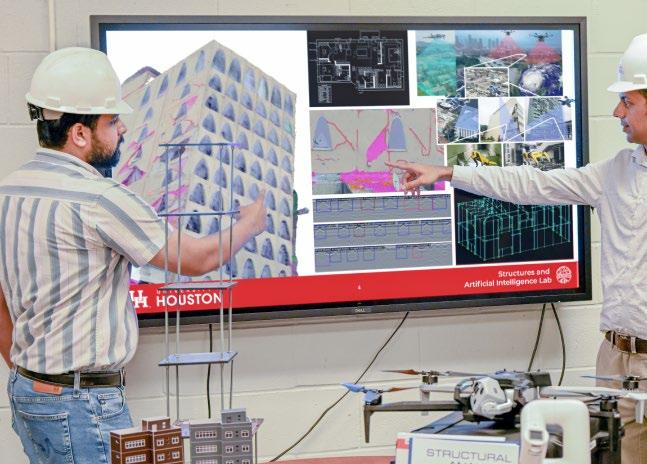
CIVIL AND ENVIRONMENTAL ENGINEERING
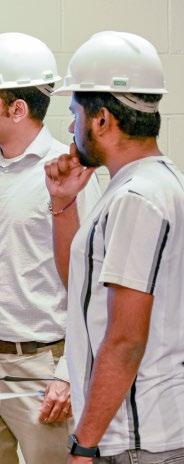
The newly planned Center for Visual Structural Expertise for Resilience (C-ViSER) aims to develop and equip engineers with cutting-edge AI and machine learning tools, transforming traditional workflows. This center is an Industry-University Cooperative Research Center (IUCRC) — a partnership structure designed to generate breakthrough research by enabling close and sustained engagement between industry innovators, world-class academic teams and government agencies.
The new center spans two sites: Purdue University and the University of Houston. A University of Houston hosted a workshop earlier this year to establish the goals of the center, including fostering the new partnerships between industry and academia mentioned above, and will engage prospective center members in discussions around C-ViSER’s focus, value propositions and potential research projects to develop a research roadmap that aligns with the needs and interests of industry.
Structural engineers draw on centuries of experience captured in detailed documents like codes and specifications to create designs, develop drawings, capture photos, and produce reports that guide construction and maintenance decisions.
“By using AI to tap into insights from past projects, our goal with the Center is to help engineers realize efficiencies that ultimately result in more sustainable, cost-effective, and resilient construction and maintenance of civil infrastructure,” said Hoskere.
University of Houston | Cullen College of Engineering
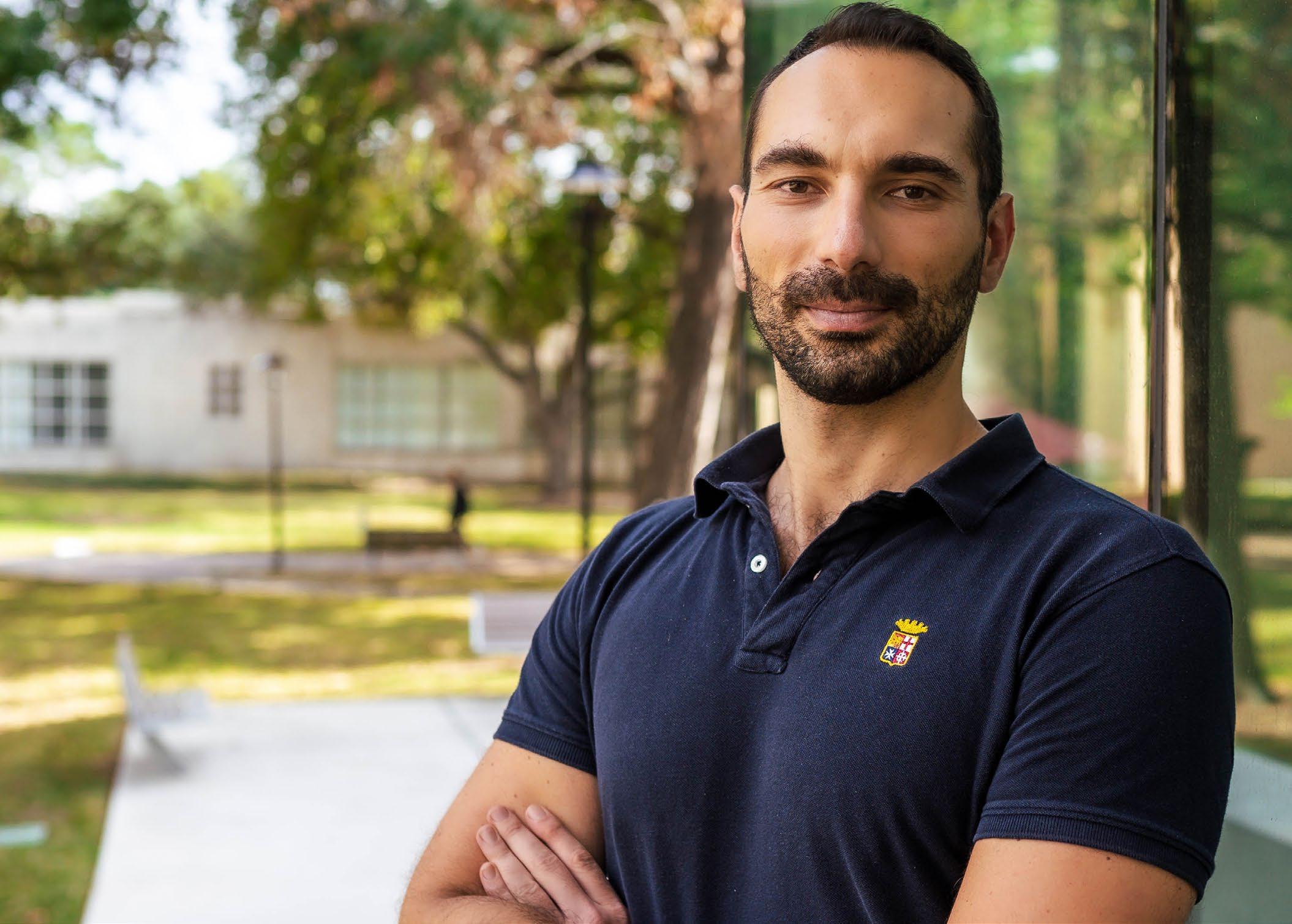
Pictured: UH assistant professor of Civil and Environmental Engineering Pietro Milillo presents results of Interferometric Synthetic Aperture Radar, which measures infrastructure deformation from space with millimetric accuracy.
CIVIL AND ENVIRONMENTAL ENGINEERING
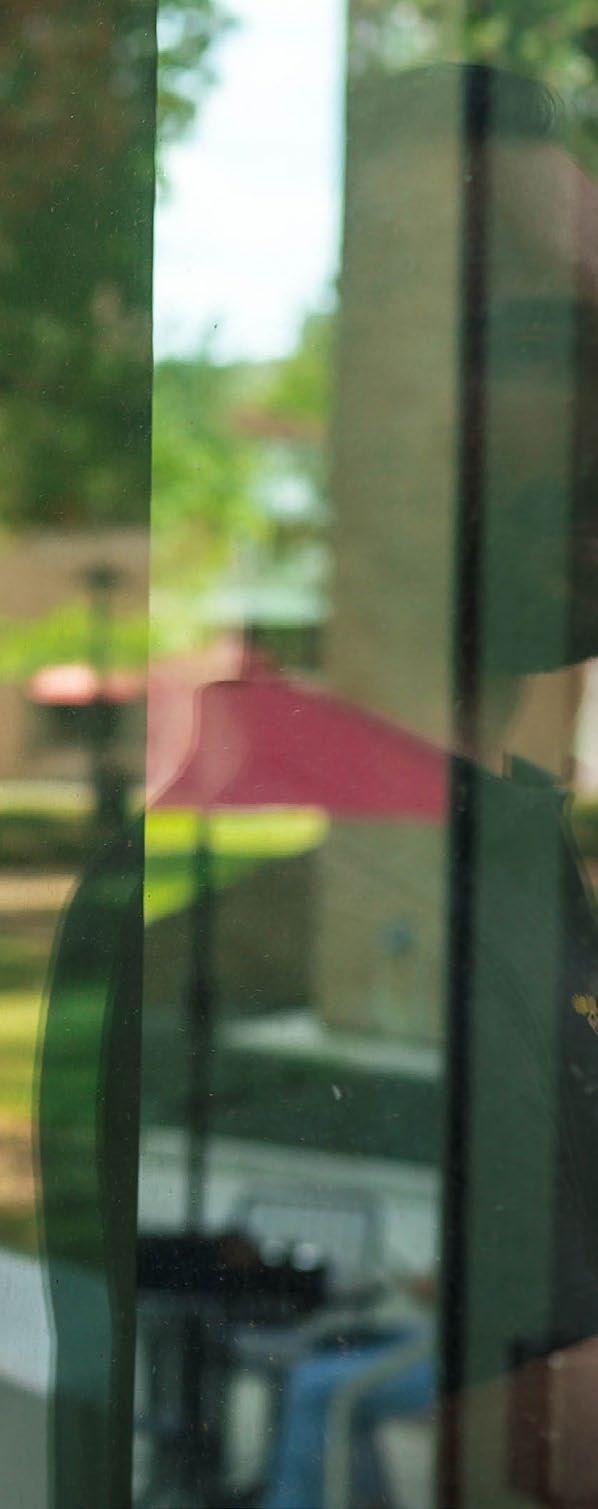
New findings published this morning in the journal Nature Communications Earth and Environment, from a University of Houston spaceborne-monitoring team, indicate the dam may have had deformation hotspots before the war, pre-dating the actual collapse.
“Through our analysis, we observed displacements characterizing different segments of the dam, up to two years prior to the actual collapse,” reports UH assistant professor of Civil and Environmental Engineering Pietro Milillo.
In the article, Milillo and team present the results of a methodology called InSAR (Interferometric Synthetic Aperture Radar) which measures infrastructure deformation from space with millimetric accuracy using radar images of the Earth’s surface collected from orbiting satellites.
The findings came about while the team was conducting a study monitoring the stability of infrastructure during the Russian invasion of Ukraine. By leveraging spaceborne technology, the team, including the German Aerospace Center (DLR) and the Delft University of Technology (TU Delft) uncovered previously unseen details of the pre-collapse of the dam and detected movements and deformations in the dam years before the collapse, providing valuable insights into its stability.
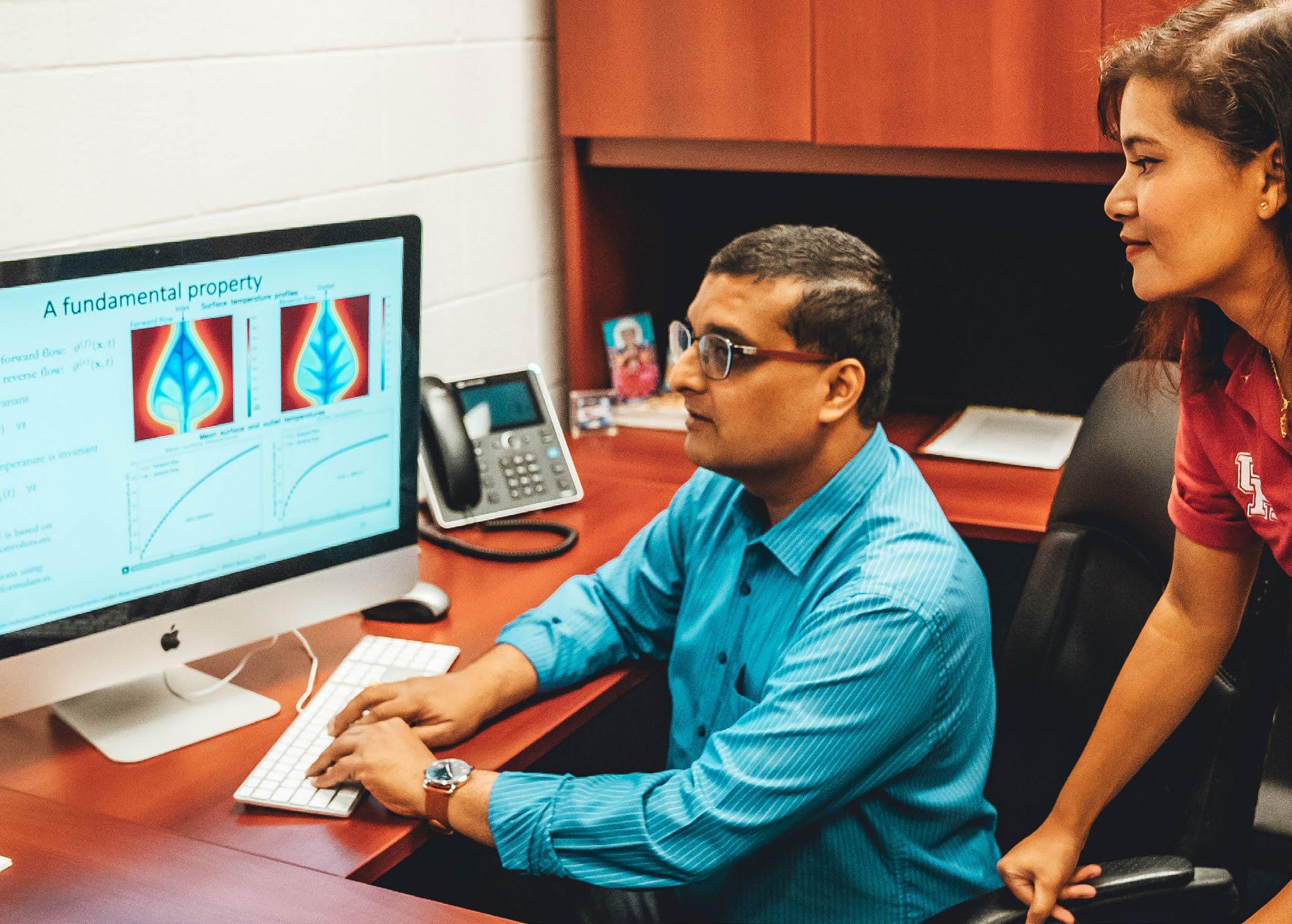
professor and associate chairman of the Civil and Environmental Engineering Department, is the lead author for a new paper written with doctoral student Kripa Adhikari about using fluids to control temperature.
CIVIL AND ENVIRONMENTAL ENGINEERING

In an attempt to better regulate temperature in a variety of synthetic structures and gain a deeper understanding of biological systems, a newly published paper by researchers from the Cullen College of Engineering’s Civil and Environmental Engineering Department finds some surprising conclusions about using fluids to control temperature.
“Configuration-independent thermal invariants under flow reversal in thin vascular systems” was published recently in PNAS Nexus. Its lead author is Kalyana Nakshatrala, associate professor and associate chairman of the Civil and Environmental Engineering Department and Kripa Adhikari, a doctoral student of Nakshatrala at UH.
Much like how mammals and birds regulate their body temperature through the circulation of blood in their vascular systems, we aim to mimic a similar mechanism in the synthetic world,” he said. “We want to modulate temperature by flowing a fluid through a network of vesicles embedded within the body. Surprisingly, we found several symmetries or invariances – Swapping the locations of the fluid’s inlet and outlet does not alter thermal efficiency.
Nakshatrala and Adhikari said, “Several related research initiatives are currently underway utilizing and extending the findings presented in the paper. These endeavors span mathematical analysis, design optimization, and additive manufacturing with an overarching goal of mimicking nature and bringing various thermal regulation and active-cooling strategies to the synthetic world. Stay cool!”
University of Houston | Cullen College of Engineering
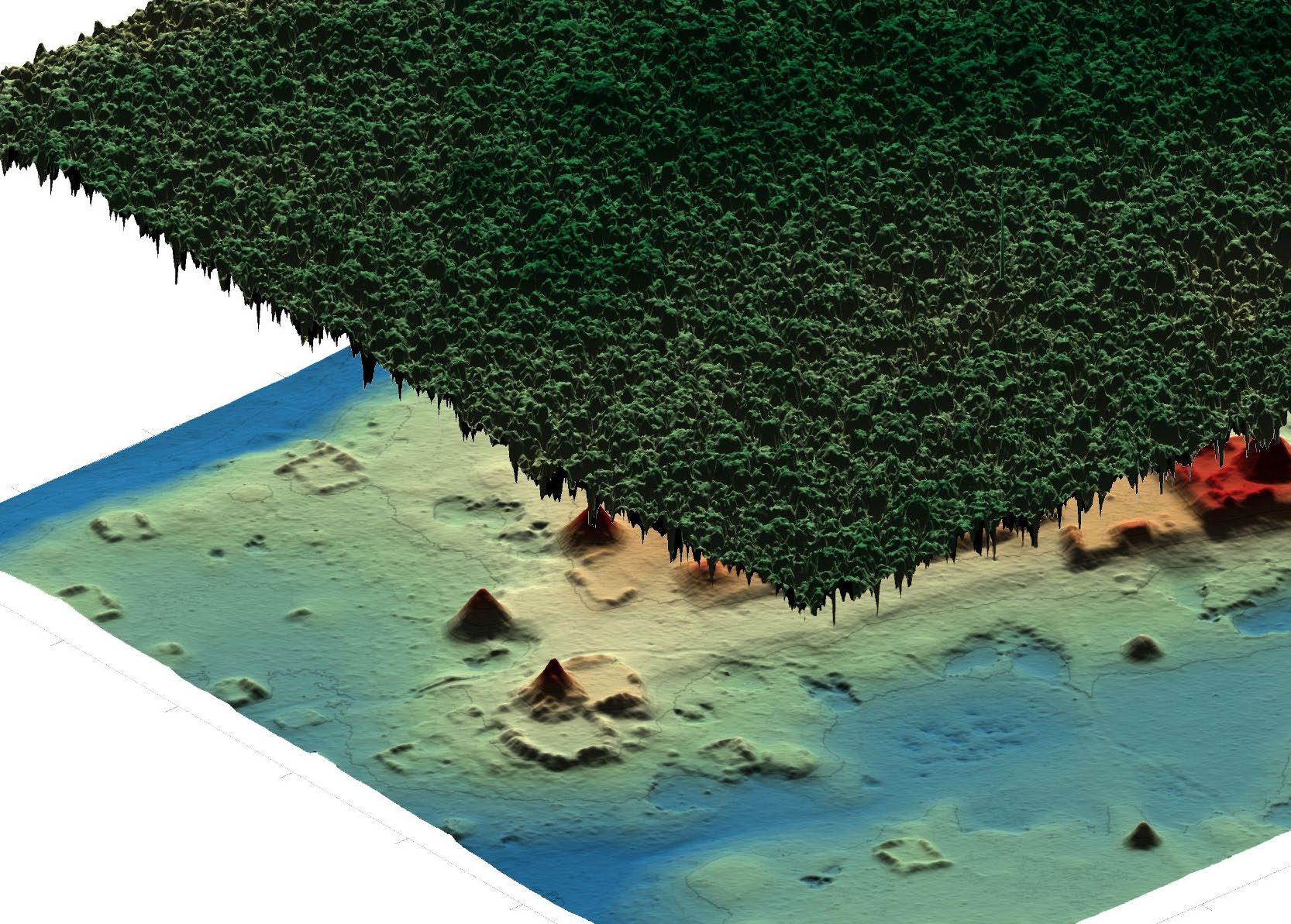


In the ongoing quest to unearth the world’s hidden mysteries, University of Houston researchers and archaeology partners have discovered a lost Maya city deep in the jungles of Campeche, on the Yucatan Peninsula, in Mexico. Notable among the findings were several 50-foot-tall structures, resembling pyramids, and pottery that dates the city to the Late Classic period, between the years 600 and 800.
Though undeniably rare and incredibly fascinating, finding the city, now dubbed Ocomtún, or stone column in Maya, is all in a day’s work for Juan Carlos Fernandez-Diaz, co-principal investigator of the National Center for Airborne Laser Mapping (NCALM) at UH. “For Mexico and Central America, we are the premier research center that has been able to do this quickly and affordably. We have over ten years of these kinds of these discoveries,” says Fernandez-Diaz.
Kripa Adhikari will work as an intern for AI/ML Models
Testing at the Pacific Northwest National Laboratory in Washington from May to August this year. Her advisor is Kalyana
Babu Nakshatrala, associate professor and associate chair of the Civil and Environmental Engineering Department.
“I have been working in the field of renewable energy, including geothermal energy,” she said. “My expertise lies in modeling, where I integrate concepts from continuum theories, mathematics, simulations, and machine learning perspectives. To validate our models effectively, we collaborate closely with experimentalists and field scientists from various universities and national labs.”
At the PNNL, Adhikari’s duties will include the complete testing and validation of AI/ML models for carbon storage. She will work closely with PNNL researchers and the CAML group at UH in implementing the code and running simulations on massively parallel supercomputers. The project aligns with her dissertation and it will be a part of her doctoral dissertation.
“I aim to leverage machine learning techniques and apply them to the field of carbon capture and storage, which also involves subsurface modeling,” she said. “Our laboratory, CAML at UH, has extensive experience in subsurface modeling, and incorporating machine learning-based modeling is a recent addition to our research group. This internship opportunity will enable me to utilize my existing knowledge while also acquiring new skills in this domain after working closely with researchers at PNNL.”
Adhikari has had a distinguished academic career at UH. In July, she presented research on thermal cooling after earning a travel award for the 17th U. S. National Congress on Computational Mechanics (USNCCM). In November, a paper by her and Nakshatrala about temperature regulation was published in PNAS Nexus. This year, she was also named to the inaugural cohort of UH-Chevron Energy Graduate Fellows.


CIVIL AND ENVIRONMENTAL ENGINEERING

Abdulrahman Salah is a Ph.D. candidate mentored by Dimitrios Kalliontzis, an assistant professor in the CEE Department. Salah earned the American Concrete Institute (ACI) Foundation’s Fellowship for the 2024-25 academic year.
“I was so excited about winning the scholarship,” he said. “Receiving this fellowship felt like a beam of light on the path I had chosen. I am deeply grateful for the opportunity to further my research and the trust placed in me by the ACI Foundation. This fellowship is not just a recognition of my work. It is a promise of the impact we can achieve together in the future of civil engineering. I am thrilled at the prospect of contributing to meaningful advancements in our industry.”
The fellowship comes with a $10,000 educational stipend, as well as recognition in Concrete International magazine. Salah will also be matched with a mentor from industry, and attend the ACI conventions in Philadelphia in November 2024 and Toronto in 2025.
Salah came to the Cullen College of Engineering to pursue his doctorate in Fall 2021.
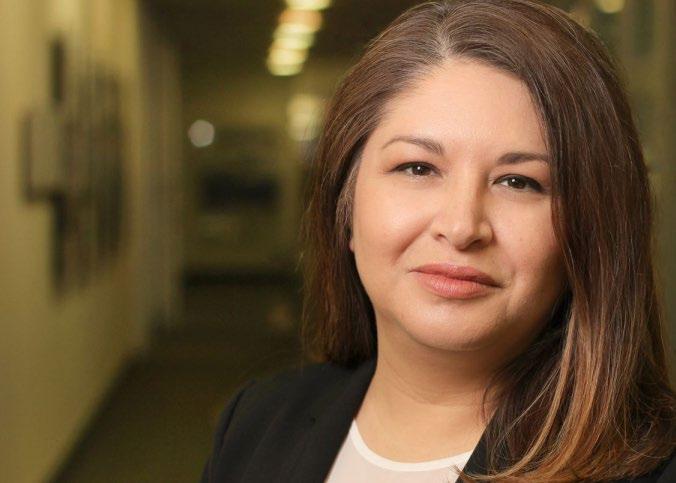
CIVIL AND ENVIRONMENTAL ENGINEERING

In a remarkable celebration of talent and dedication, Mackrena L. Ramos, P.E.,has been named the 2024 HHAE Engineer of the Year. This prestigious honor is not only a testament to her outstanding professional accomplishments but also reflects her unwavering commitment to advancing the engineering community.
Mackrena’s journey in engineering has been marked by significant achievements, showcasing her expertise and innovation in the field. Her contributions have not gone unnoticed, and this accolade serves as a recognition of her hard work and passion for engineering.
Beyond her professional success, Mackrena is a fervent advocate for the engineering community. She actively participates in numerous industry organizations, where she plays a vital role in mentoring young engineers and fostering an inclusive environment. Through her efforts, she is paving the way for future generations, ensuring that the field continues to thrive with diverse talent.
The University of Houston Cullen College of Engineering addresses key challenges in energy, healthcare, infrastructure, and the environment by conducting cuttingedge research and graduating hundreds of world-class engineers each year. With research expenditures topping $40 million and increasing each year, we continue to follow our tradition of excellence in spearheading research that has a real, direct impact in the Houston region and beyond.

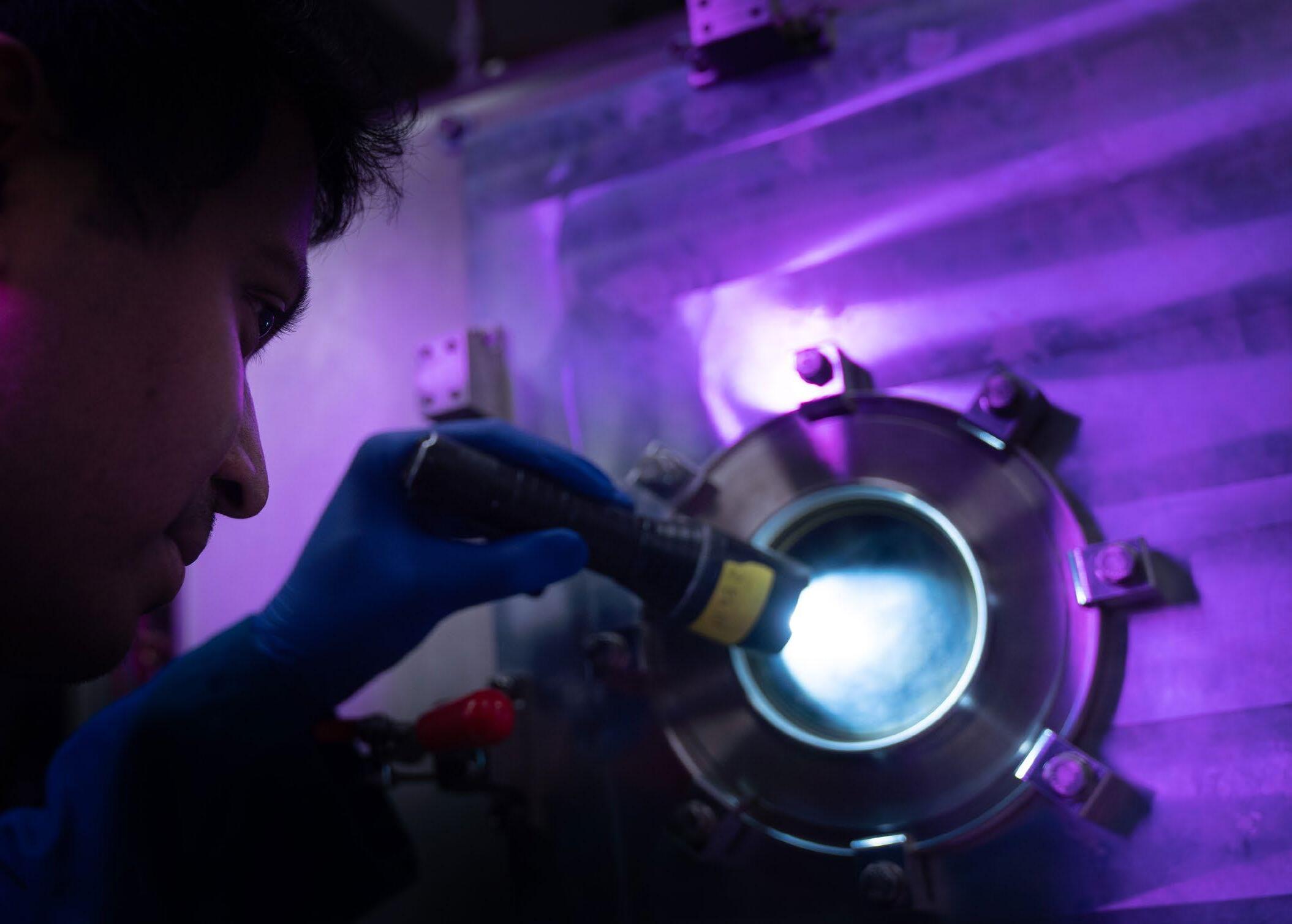
UH Cullen College of Engineering
Civil and Environmental Engineering
Engineering Building 1, Room N107
4226 Martin Luther King Boulevard
Houston, TX 77204-4003
@UHEngineering